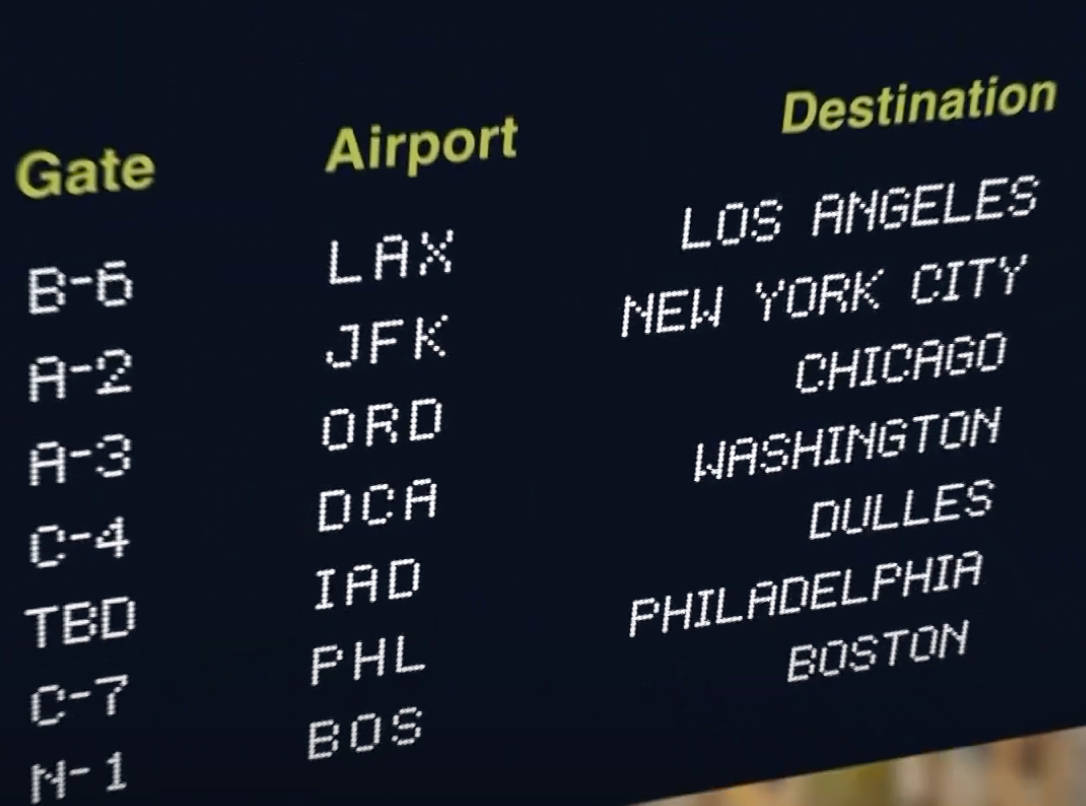The Intriguing World of Airport Codes
When you embark on a journey that involves air travel, you are likely to encounter a string of three seemingly random letters that represent a particular airport. These seemingly arbitrary combinations of letters, known as airport codes, hold a fascinating history and purpose in the world of aviation. In this article, we will delve into the origin, significance, and usage of these codes that play a crucial role in ensuring smooth global air travel.
Understanding Airport Codes
Airport codes are three-letter abbreviations assigned to airports around the world. These codes serve as a quick and standardized way to identify airports, making communication and data entry more efficient for pilots, air traffic controllers, travel agents, and passengers. Each code is unique and represents a specific airport, helping to avoid confusion and errors in flight operations.
The Three Types of Airport Codes
There are three main types of airport codes:
- IATA Codes: The International Air Transport Association (IATA) assigns the widely recognized three-letter codes that travelers often encounter on their boarding passes and luggage tags. These codes are designed to be easily recognizable and are typically derived from the airport's name or location. For instance, "JFK" represents John F. Kennedy International Airport in New York. IATA codes were introduced in the 1960s to standardize airport identification and are used globally by airlines and travel agencies.
- ICAO Codes: The International Civil Aviation Organization (ICAO) also assigns four-letter codes to airports. These codes provide valuable information about an airport's location within the global aviation network. For instance, "KATL" represents Hartsfield-Jackson Atlanta International Airport. The first letter of the ICAO code indicates the region, while the second letter signifies the country. This system helps in identifying airports and their locations worldwide.
- FAA Codes: In the United States, the Federal Aviation Administration (FAA) assigns location identifiers to airports, which are often used by air traffic controllers and pilots. These codes, like "LAX" for Los Angeles International Airport, are essential for safe and efficient air traffic management within the country.
The Story Behind the Codes
The creation of airport codes dates back to the early days of aviation, when telecommunication was limited, and a standardized system was needed to facilitate communication and navigation. Many early codes were based on the two-letter National Weather Service location identifiers, which were later expanded to three letters to accommodate the growing number of airports.
While some codes may seem arbitrary, many hold hidden stories and historical references. For example, the code "ORD" for Chicago O'Hare International Airport pays homage to its original name, Orchard Field. Similarly, "LHR" for London Heathrow Airport reflects its location in the Hounslow district of London.
Codes can also reflect cultural aspects and memorable combinations. "HEL" for Helsinki Airport humorously coincides with the Finnish word for "hello," while "BUD" for Budapest Ferenc Liszt International Airport pays tribute to the famous composer.
Practical Significance of Airport Codes
Beyond their historical and cultural significance, airport codes play a crucial role in modern air travel:
- Efficient Communication and Navigation: In an industry where split-second decisions matter, standardized airport codes facilitate efficient communication between pilots and air traffic controllers. These codes are a universal language that helps streamline instructions, route changes, and emergency responses.
- Booking and Travel: For travelers, airport codes simplify the booking process. Whether you're making reservations online, confirming flight details, or locating baggage claim areas, these codes ensure accuracy and eliminate confusion.
- Global Connectivity: As air travel continues to connect people across the globe, airport codes remain a vital tool for ensuring smooth transitions during layovers and connecting flights. Travelers can quickly identify their next destination and navigate complex airport terminals.
The Future of Airport Codes
In an increasingly interconnected world, the importance of airport codes continues to grow:
- Technological Advancements: Advancements in technology are shaping the way airport codes are used. Mobile apps, digital boarding passes, and augmented reality wayfinding tools make it even easier for travelers to navigate unfamiliar airports using codes.
- Expansion and New Codes: With the rise of new airports and growing air travel demand, the need for new codes emerges. As countries invest in their aviation infrastructure, new codes will be assigned, potentially following the footsteps of historical and cultural references.
- Preserving Tradition: While technological innovation is embraced, preserving the tradition and stories behind existing airport codes will remain essential. These codes are not just combinations of letters; they encapsulate the rich history and character of the airports they represent.
Final Thoughts: A Journey Through Codes
The world of airport codes is far from being just a utilitarian aspect of travel. It is a tapestry woven with history, culture, and connectivity. The next time you look at your boarding pass or luggage tag and decipher those three letters, remember that they are not mere characters; they are gateways to a world of exploration and adventure, all made possible by the intricate language of airport codes. So, as you step into the bustling realm of air travel, take a moment to appreciate the stories these codes carry and the seamless journeys they help create. Learn more about the fascinating world of airports.
FAQ: Airport Codes
Find more help here for your journey through the airport




